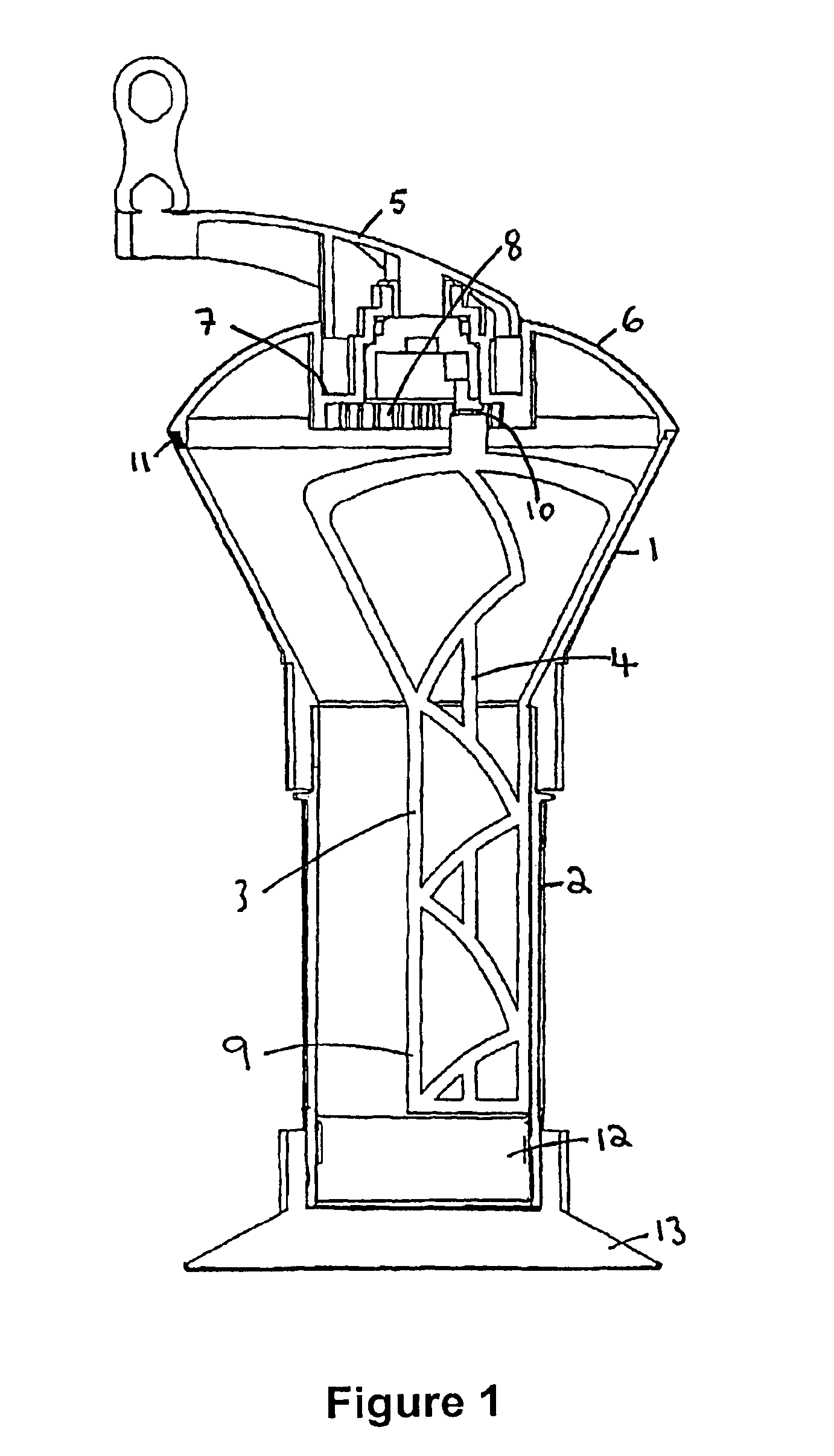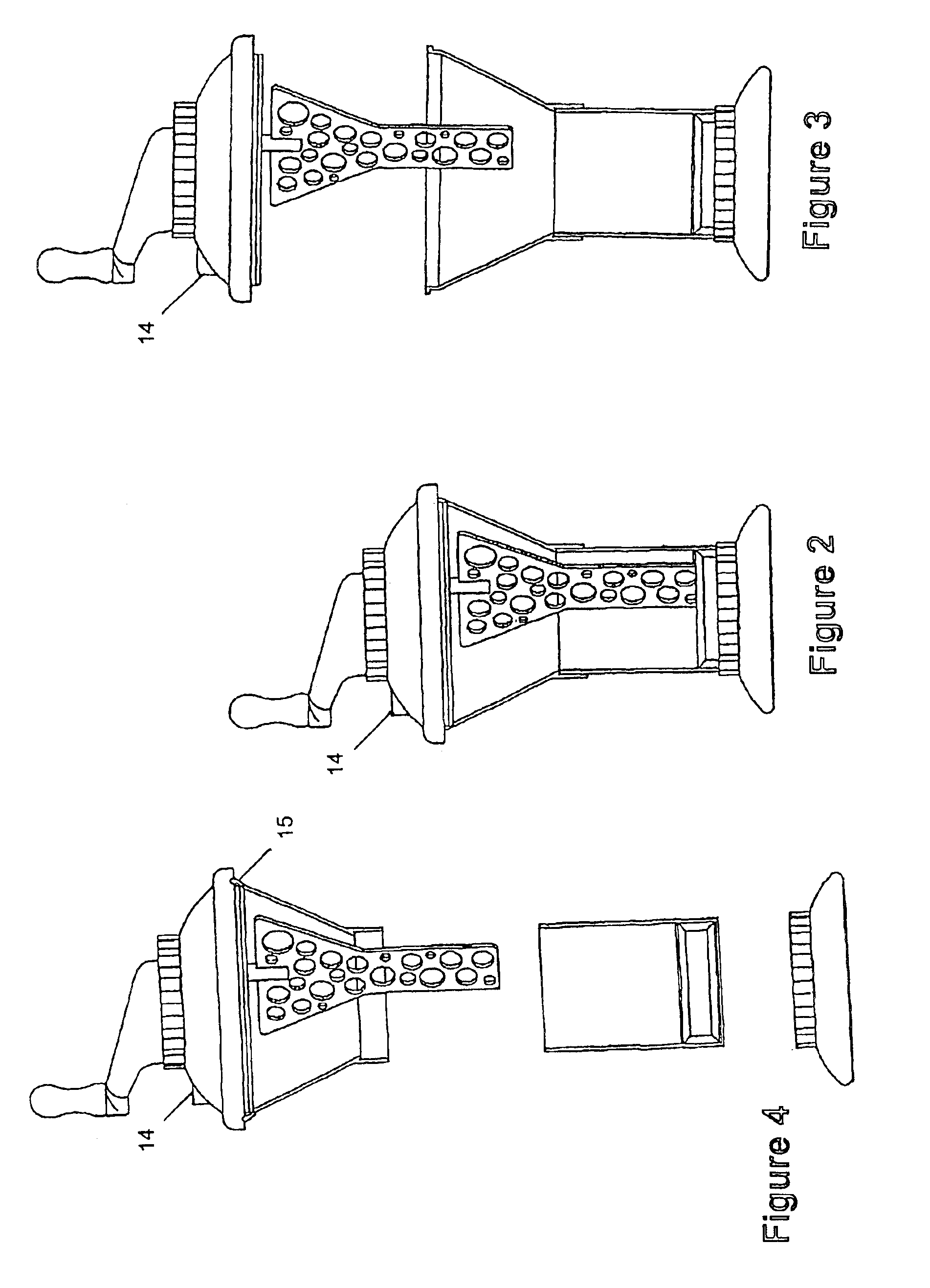Orthopaedic cement mixing and dispensing device
a technology for orthopaedic cement and mixing equipment, which is applied in the direction of mixers, diagnostics, applications, etc., can solve the problems of difficult mixing operation, inefficiency, messy transfer, etc., and achieve the effect of better cutting through cemen
- Summary
- Abstract
- Description
- Claims
- Application Information
AI Technical Summary
Benefits of technology
Problems solved by technology
Method used
Image
Examples
Embodiment Construction
The mixing apparatus comprises a first funnel chamber 1 and a second, cylindrical mixing chamber 2. A mixing paddle 3 extends through both chambers comprising at least one blade supported by a rotatable shaft 4. The shaft, and, therefore, the mixing paddle, is rotated by means of a handle 5. The handle is mounted in a lid 6 adapted to be sealingly fitted onto the top of the funnel 1. A gear mechanism 7 is provided to cause rotation of the shaft 4 about its own axis, as well as rotation of the shaft axis around the mixing chambers.
The preferred gear mechanism comprises a fixed, circular, toothed rack 8 arranged coaxially with respect to the rotation axis of the handle 5, and provided on the underside of the lid 6. The mixing paddle 3 comprises radially extending mixing blades 9, mounted on the shaft 4. The shaft 4 is rotatably mounted, at one end, into the handle 5. A cog-wheel 10 is fixedly attached to the upper part of the shaft 4 for intermeshing engagement with the toothed rack 8...
PUM
 Login to View More
Login to View More Abstract
Description
Claims
Application Information
 Login to View More
Login to View More - R&D
- Intellectual Property
- Life Sciences
- Materials
- Tech Scout
- Unparalleled Data Quality
- Higher Quality Content
- 60% Fewer Hallucinations
Browse by: Latest US Patents, China's latest patents, Technical Efficacy Thesaurus, Application Domain, Technology Topic, Popular Technical Reports.
© 2025 PatSnap. All rights reserved.Legal|Privacy policy|Modern Slavery Act Transparency Statement|Sitemap|About US| Contact US: help@patsnap.com



